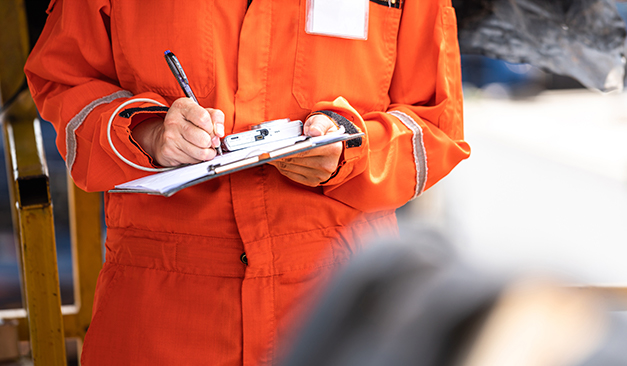All About Dementia Fall Risk
Table of ContentsThe Ultimate Guide To Dementia Fall RiskDementia Fall Risk Can Be Fun For AnyoneThe Best Strategy To Use For Dementia Fall RiskThe 9-Minute Rule for Dementia Fall Risk
A fall danger assessment checks to see exactly how most likely it is that you will fall. The assessment normally consists of: This consists of a collection of questions about your general health and wellness and if you have actually had previous drops or problems with balance, standing, and/or strolling.STEADI consists of screening, assessing, and treatment. Interventions are recommendations that might minimize your danger of dropping. STEADI consists of 3 actions: you for your threat of dropping for your risk elements that can be enhanced to attempt to protect against falls (as an example, equilibrium troubles, damaged vision) to lower your danger of falling by using effective strategies (for instance, providing education and sources), you may be asked several concerns consisting of: Have you dropped in the previous year? Do you really feel unstable when standing or walking? Are you fretted about dropping?, your service provider will test your strength, balance, and stride, making use of the complying with fall assessment devices: This examination checks your gait.
You'll rest down again. Your service provider will certainly inspect just how long it takes you to do this. If it takes you 12 secs or more, it might indicate you are at greater danger for an autumn. This examination checks strength and balance. You'll rest in a chair with your arms went across over your breast.
Move one foot midway ahead, so the instep is touching the huge toe of your various other foot. Relocate one foot fully in front of the various other, so the toes are touching the heel of your other foot.
Not known Facts About Dementia Fall Risk
Many drops happen as a result of multiple adding elements; as a result, managing the risk of falling begins with identifying the aspects that add to drop danger - Dementia Fall Risk. A few of one of the most relevant threat aspects include: Background of previous fallsChronic medical conditionsAcute illnessImpaired stride and balance, lower extremity weaknessCognitive impairmentChanges in visionCertain risky medicines and polypharmacyEnvironmental elements can also raise the danger for falls, including: Inadequate lightingUneven or harmed flooringWet or slippery floorsMissing or harmed handrails and grab barsDamaged or poorly equipped equipment, such as beds, wheelchairs, or walkersImproper use of assistive devicesInadequate guidance of the people residing in the NF, including those who exhibit aggressive behaviorsA effective autumn danger monitoring program requires an extensive professional assessment, with input from all members of the interdisciplinary team

The care plan need to likewise include treatments that are system-based, such as those that promote a secure setting (ideal lights, hand rails, get hold of bars, etc). The effectiveness of the interventions ought to be examined periodically, and the care strategy changed as essential to show modifications in the loss threat assessment. Applying an autumn risk monitoring system utilizing evidence-based finest practice can lower the prevalence of falls in the NF, while restricting the potential for fall-related injuries.
Getting The Dementia Fall Risk To Work
The AGS/BGS standard advises screening all adults aged 65 years and older for fall threat yearly. This screening contains asking people whether they have actually fallen 2 or more times in the past year or sought clinical attention for an autumn, or, if they have not dropped, whether they feel unstable when strolling.
Individuals who have fallen when without injury should have their equilibrium and stride reviewed; those with stride or equilibrium irregularities need to get added analysis. A history of 1 fall without injury and without gait or balance issues does not call for more evaluation beyond ongoing yearly fall threat testing. Dementia Fall Risk. An autumn risk assessment is called for as component of the Welcome to Medicare exam

The Buzz on Dementia Fall Risk
Documenting a drops background is one of the high quality indicators for autumn avoidance and management. copyright medicines in certain browse around these guys are independent predictors of drops.
Postural hypotension can usually be minimized by decreasing the dosage of blood his response pressurelowering medications and/or quiting medicines that have orthostatic hypotension as a side impact. Use above-the-knee support hose and resting with the head of the bed elevated may also reduce postural decreases in high blood pressure. The advisable aspects of a fall-focused health examination are received Box 1.

A Yank time higher than or equivalent to 12 secs suggests click for more high fall threat. Being not able to stand up from a chair of knee height without using one's arms suggests boosted autumn risk.
 Jason J. Richter Then & Now!
Jason J. Richter Then & Now! Kirk Cameron Then & Now!
Kirk Cameron Then & Now! Hailie Jade Scott Mathers Then & Now!
Hailie Jade Scott Mathers Then & Now! Karyn Parsons Then & Now!
Karyn Parsons Then & Now! Phoebe Cates Then & Now!
Phoebe Cates Then & Now!